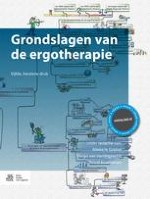2017 | OriginalPaper | Hoofdstuk
17. Begrippen begrijpen: de onderbouwing van ergotherapiemodellen
Auteurs : Astrid Kinébanian, MSc, Inka Logister-Proost, Ergotherapeut
Gepubliceerd in: Grondslagen van de ergotherapie
Uitgeverij: Bohn Stafleu van Loghum
